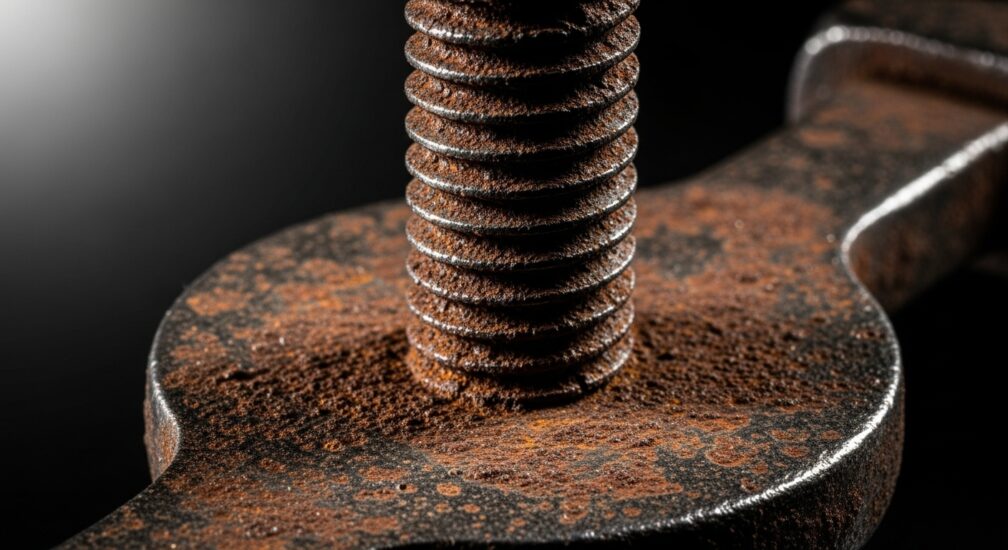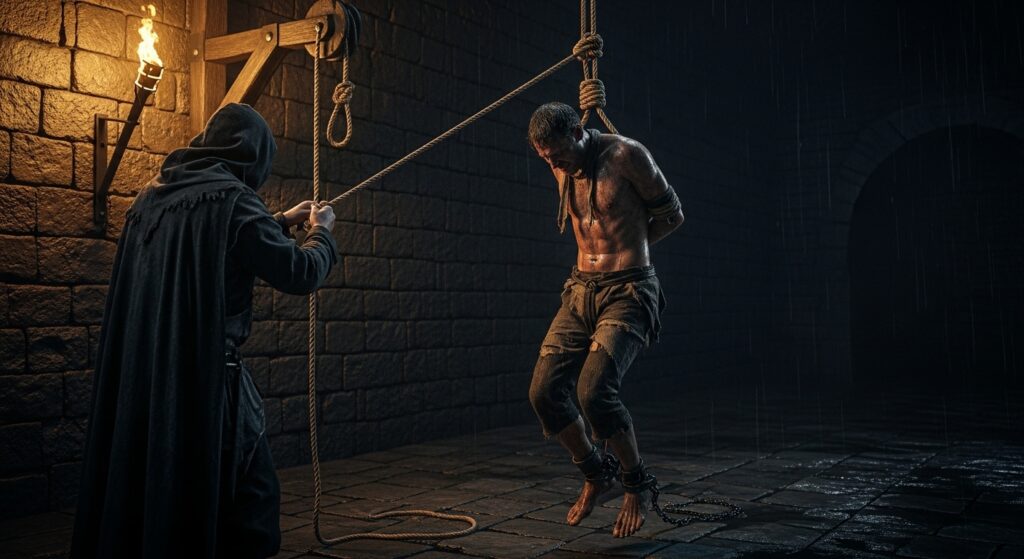The thumbscrew: cold metal, crushing pressure, screams bouncing off dungeon walls. It’s hard to think of a medieval torture device that sums up human cruelty better. This little thing shows just how creative and brutal interrogations could get back then.
What’s a Thumbscrew?
At its core, what’s a thumbscrew? It was a compact yet devastating torture device built from sturdy iron, designed to inflict unbearable pain without causing instant death. The thumbscrew torture device typically consisted of a small vice-like structure with screws and plates that enclosed a victim’s finger or thumb. As the screw was turned, it crushed flesh and bone beneath, creating unimaginable agony.
The thumbscrew was a favorite tool of inquisitors, guards, and executioners seeking confession or compliance. Its simplicity made it effective — no flames or blades were needed, only compression and time.
Thumbscrew Torture Method and Design
The thumbscrew design varied slightly across regions, but its mechanism was universally cruel. The device often featured two flat metal bars connected by a crank or chain, allowing the user to adjust the pressure. A person’s thumb — sometimes multiple fingers — was placed between these bars, and the screw was turned to tighten the grip.
The pain caused by the thumbscrew grew with every twist. Bones splintered, nails tore, and flesh flattened under the slow tightening force. The device served not only as punishment but also as psychological warfare. Prisoners could hear others’ anguish before their own ordeal began, creating an atmosphere of terror inside the torture chamber.
The thumbscrew torture method became a symbol of deliberate restraint — a means of drawing out suffering rather than ending it quickly. Its purpose wasn’t execution, but coercion.
Torture Devices in Medieval Europe
To understand the thumbscrew, one must see it within the larger system of torture devices in medieval Europe. Instruments like the rack, the Iron Maiden, or the breaking wheel all reflected the medieval obsession with order, justice, and divine retribution. Authorities often justified their cruelty as a necessary form of oppression to maintain control or extract truth.
Unlike larger machines of death, the thumbscrew was intimate. It required close proximity — the torturer watching the victim’s eyes as pain escalated. It was a weapon of fear and authority, used in both civil and ecclesiastical inquisitions.
Its very size made it terrifyingly efficient. The device could be carried into dungeons, courtrooms, or military camps, where it served as a portable reminder of human brutality.
The Thumbscrew’s Legacy and Museum Exhibits
Today, surviving relics of the thumbscrew exist as haunting artifacts of history. In modern times, these objects serve not to glorify cruelty but to educate. The thumbscrew museum exhibit at the Medieval Torture Museum in St Augustine invites visitors to confront the physical and moral weight of medieval punishment.
At the Medieval Torture Museum in Chicago, guests walk through immersive chambers that recreate the tension and fear of the inquisitorial era. Meanwhile, the Medieval Torture Museum in Los Angeles combines historical mechanics with realistic scenes to show how devices like the thumbscrew worked — an unsettling yet powerful reflection on the fragility of the human body under oppression.
For those seeking deeper context, the museum’s blog explores the evolution of punishment, execution, and retribution across centuries, connecting the artifacts to real historical systems of power.
These displays transform suffering into remembrance — ensuring that such instruments of injustice remain lessons, not curiosities.
From Brutality to Reflection
The thumbscrew, a torture device from the Middle Ages, shows how simple tools can inflict terrible pain. With its iron grip and crank, it crushed hands, causing immense suffering. But it also showed how much people can endure when they’re scared.
Thinking about these objects isn’t about enjoying the horror; it’s about understanding it. They show us that even simple stuff – a screw, a lever, a chain – can cause immense suffering if given to those with too much power.
Walking through a dim museum hall, looking at some old metal thing, it is impossible to ignore the story of the thumbscrew. You learn that pain used to equal guilt, and silence meant you’d be okay. History keeps these awful things around, not because we’re proud of being brutal, but to remind everyone what can happen when fear messes up what’s right.






